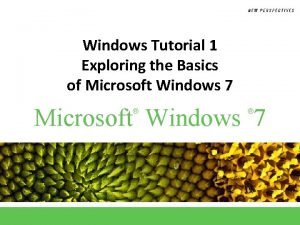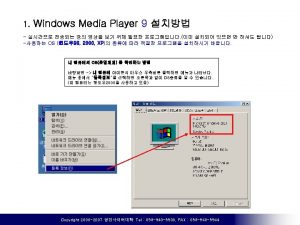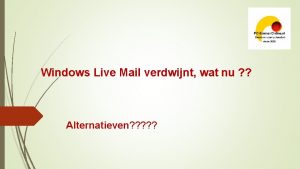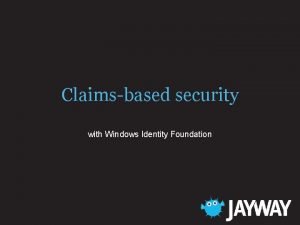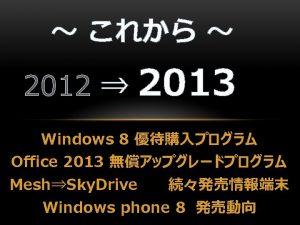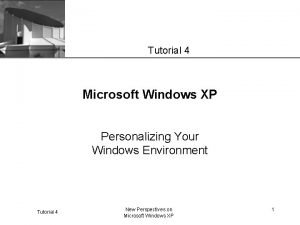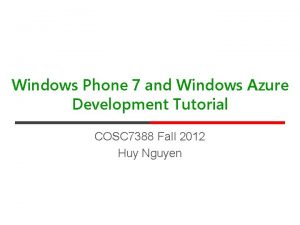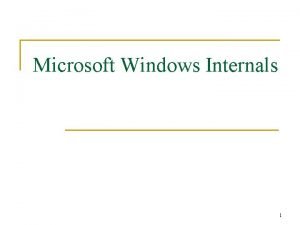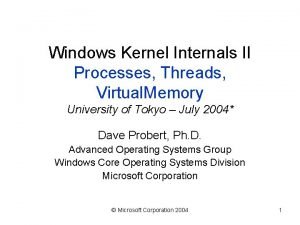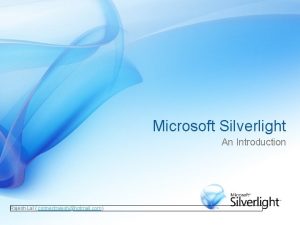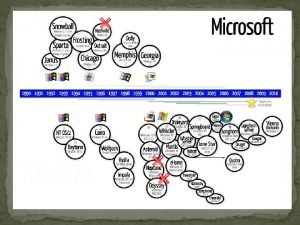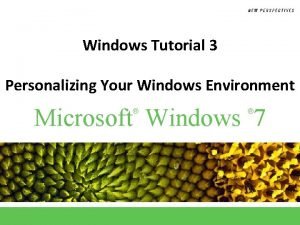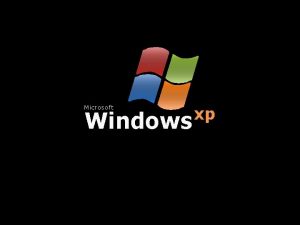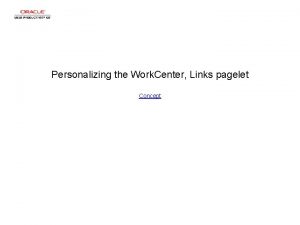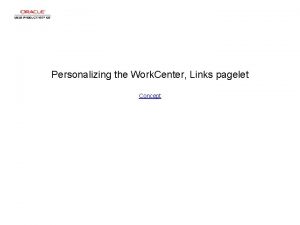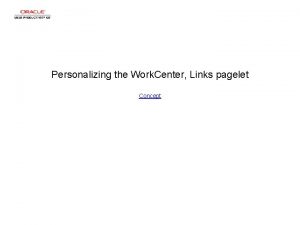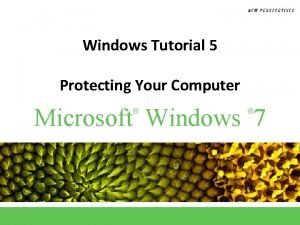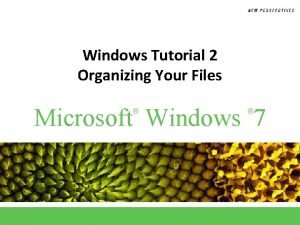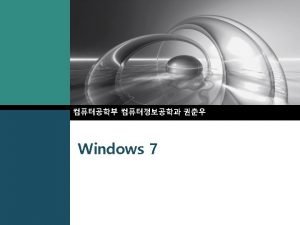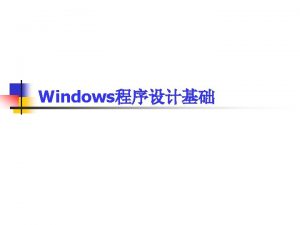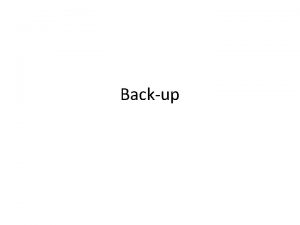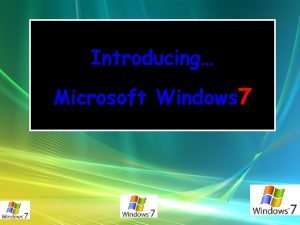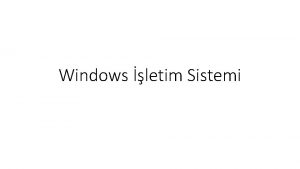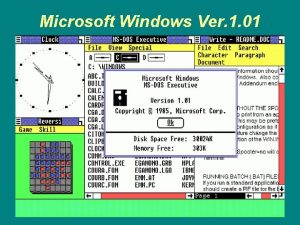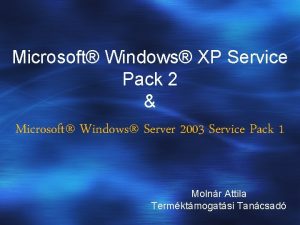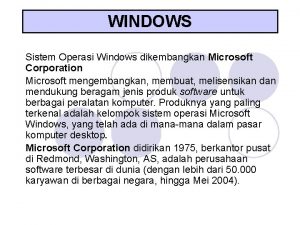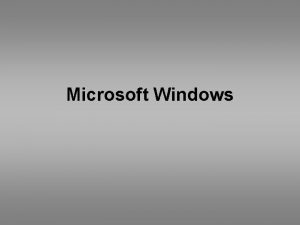XP Tutorial 4 Microsoft Windows XP Personalizing Your



























- Slides: 27

XP Tutorial 4 Microsoft Windows XP Personalizing Your Windows Environment Tutorial 4 New Perspectives on Microsoft Windows XP 1

XP Types of Desktop Icons Tutorial 4 New Perspectives on Microsoft Windows XP 2

XP Creating and Storing a Document on the Desktop • Right-click an empty area of the desktop, and then point to New on the shortcut menu • Click the type of document you want to create • Type a name for the document that appears on the desktop as a document icon Tutorial 4 New Perspectives on Microsoft Windows XP 3

Opening a Document Stored on the Desktop XP • To open a document that is stored on the desktop, you double-click its icon Tutorial 4 New Perspectives on Microsoft Windows XP 4

XP Creating a LOG File • Notepad automatically inserts the date when you open a document only if the document begins with. LOG in uppercase letters Tutorial 4 New Perspectives on Microsoft Windows XP 5

XP Using Shortcuts • Shortcuts are quick ways to access an object on your computer without going to its permanent location Tutorial 4 New Perspectives on Microsoft Windows XP 6

XP Deleting Shortcut Icons • If you delete a document icon, you also delete the document • If you delete a shortcut icon, you don’t delete the document itself because it is stored elsewhere • To delete a shortcut, click the shortcut icon to select it and then press the Delete key Tutorial 4 New Perspectives on Microsoft Windows XP 7

XP Using the Control Panel • The Control Panel is a window that contains specialized tools you use to change the way Windows looks and behaves • All of the Control Panel tools provide access to a dialog box that lets you select or change the properties, or characteristics, of an object Tutorial 4 New Perspectives on Microsoft Windows XP 8

XP Control Panel Tutorial 4 New Perspectives on Microsoft Windows XP 9

XP Control Panel Categories • • • Appearance and Themes Network and Internet Connections Add or Remove Programs Sounds, Speech, and Audio Devices Performance and Maintenance Printers and Other Hardware User Accounts Date, Time, Language, and Regional Options Accessibility Options Tutorial 4 New Perspectives on Microsoft Windows XP 10

XP Opening the Appearance and Themes Category • In the right pane of the Control Panel, click Appearance and Themes Tutorial 4 New Perspectives on Microsoft Windows XP 11

XP Changing Your Desktop’s Background • In the Appearance and Themes window, click Change the desktop background • If necessary, click (None) in the Background list if it is not already selected • Click the Color list arrow and choose the color you wish to set as your background color Tutorial 4 New Perspectives on Microsoft Windows XP 12

XP Changing the Appearance of Desktop Elements • Open the Display Properties dialog box • Click the Appearance tab in the Display Properties dialog box Tutorial 4 New Perspectives on Microsoft Windows XP 13

XP Screen Savers • A screen saver blanks the screen or displays a moving design whenever you haven’t worked with the computer for a specified period of time • You can select how long you want the computer to sit idle before the screen saver activates • Windows XP provides a wide variety of screen savers Tutorial 4 New Perspectives on Microsoft Windows XP 14

XP Activating a Screen Saver • Click the Screen Saver tab in the Display Properties dialog box • Click the Screen saver list arrow, and then select your desired screen saver • Click the Preview button • When you’re finished previewing the screen saver, move the mouse and then click the OK button Tutorial 4 New Perspectives on Microsoft Windows XP 15

XP Activating a Screen Saver Tutorial 4 New Perspectives on Microsoft Windows XP 16

XP Changing the Screen Resolution • Open the Appearance and Themes window, and then click Change the screen resolution • Drag the Screen resolution slider to the left or right, to select the desired resolution Tutorial 4 New Perspectives on Microsoft Windows XP 17

XP Viewing the Color Settings • Click the Color quality list arrow to display the list of color palettes and select the desired color quality • Click the OK button Tutorial 4 New Perspectives on Microsoft Windows XP 18

XP Moving and Resizing the Taskbar • Make sure the taskbar is unlocked. To do so, rightclick any blank area on the taskbar, and then click Lock the Taskbar on the shortcut menu to remove the check mark • To move the taskbar, click a blank area on the taskbar, hold down the left mouse button, and drag the taskbar to a new location • To resize the taskbar, move the mouse pointer over the taskbar border until the pointer changes, then drag the border to the desired width Tutorial 4 New Perspectives on Microsoft Windows XP 19

XP Moving and Resizing the Taskbar Tutorial 4 New Perspectives on Microsoft Windows XP 20

Setting Taskbar Appearance Properties XP • Right-click a blank area in the taskbar, and click Properties on the shortcut menu Tutorial 4 New Perspectives on Microsoft Windows XP 21

XP Working with Taskbar Toolbars Tutorial 4 New Perspectives on Microsoft Windows XP 22

XP Displaying a Taskbar Toolbar • Right-click a blank area of the taskbar, point to Toolbars, and then click the name of the toolbar you want to edit Tutorial 4 New Perspectives on Microsoft Windows XP 23

XP Creating a Custom Taskbar Toolbar • To create a new toolbar, right-click a blank area of the taskbar, point to Toolbars, and then click New Toolbar • In the New Toolbar dialog box, click the folder or object you want to turn into a toolbar, and then click the OK button Tutorial 4 New Perspectives on Microsoft Windows XP 24

XP Adding an Item to the Start Menu • Right-click a blank area of the taskbar, and then click Properties on the shortcut menu • Click the Start Menu tab in the Taskbar and Start Menu Properties dialog box, and then click the Customize button • Click the Advanced tab in the Customize the Start Menu dialog box • In the Start menu items list, select the file, folder, or object that you want to add to the Start menu • Click the OK button Tutorial 4 New Perspectives on Microsoft Windows XP 25

XP Selecting Start Menu Settings • Control Panel • Enable dragging and dropping • Favorites menu • Help and Support • My Computer • My Documents • My Music Tutorial 4 • • My Network Places My Pictures Network Connections Printers and Faxes Run command Scroll Programs Search System Administrative Tools New Perspectives on Microsoft Windows XP 26

XP Removing a Start Menu Item • Right-click a blank area of the taskbar, and then click Properties on the shortcut menu • Click the Start menu tab on the Taskbar and Start Menu Properties dialog box • Click the Customize button to open the Customize Start Menu dialog box • In the Start menu items list, deselect the item that you want to remove, and then click the OK button Tutorial 4 New Perspectives on Microsoft Windows XP 27
 Attending responding personalizing initiating
Attending responding personalizing initiating Microsoft windows movie maker
Microsoft windows movie maker Microsoft windows tutorial
Microsoft windows tutorial Grado 3 movie
Grado 3 movie Windows media player 9 for windows 10
Windows media player 9 for windows 10 Mailprogramma windows 7
Mailprogramma windows 7 Windows driver kit windows 7
Windows driver kit windows 7 Windows media player 9 skins
Windows media player 9 skins Windows identity foundation windows 10
Windows identity foundation windows 10 Windws update
Windws update Windows xp vm download
Windows xp vm download Windows mobile center windows 10
Windows mobile center windows 10 Download movie maker 2012
Download movie maker 2012 Ipseq
Ipseq Windows xp mode for windows 10
Windows xp mode for windows 10 Give us your hungry your tired your poor
Give us your hungry your tired your poor Windows xp tutorial
Windows xp tutorial Windows phone app development tutorial
Windows phone app development tutorial Windows internals tutorial
Windows internals tutorial Windows phone tutorial
Windows phone tutorial Small business server 2010
Small business server 2010 Small business server 2011 end of life
Small business server 2011 end of life Microsoft-windows-kernel-process
Microsoft-windows-kernel-process Silverlight ppt
Silverlight ppt Conclusión de microsoft project
Conclusión de microsoft project Mark overmars game maker
Mark overmars game maker Microsoft paulina windows 7
Microsoft paulina windows 7 Microsoft windows armendicott
Microsoft windows armendicott


